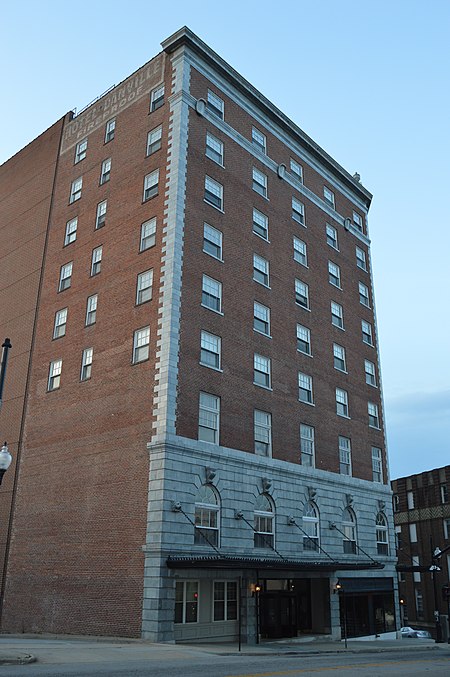Hotel Danville
1928 establishments in VirginiaBuildings and structures in Danville, VirginiaColonial Revival architecture in VirginiaHotel buildings completed in 1928Hotel buildings on the National Register of Historic Places in Virginia ... and 4 more
Individually listed contributing properties to historic districts on the National Register in VirginiaNRHP infobox with nocatNational Register of Historic Places in Danville, VirginiaSouthern Virginia Registered Historic Place stubs

Hotel Danville, also known as the Municipal Building and City Market, is a historic hotel building located at Danville, Virginia. The main section was built in 1927–1928, and consists of a ten-story, brick main section with two smaller axes to form a "V"-shape. The building is in the Neo-Adamesque style. The building once included the Capitol Theater, and incorporated a three-story rectangular hipped roof wing, or annex, that was the former Municipal Building and City Market complex. The building provides senior housing, known as Danville House. It was listed on the National Register of Historic Places in 1984. It is located in the Downtown Danville Historic District.
Excerpt from the Wikipedia article Hotel Danville (License: CC BY-SA 3.0, Authors, Images).Hotel Danville
Main Street, Danville
Geographical coordinates (GPS) Address Nearby Places Show on map
Geographical coordinates (GPS)
| Latitude | Longitude |
|---|---|
| N 36.586944444444 ° | E -79.394722222222 ° |
Address
Main Street
Main Street
24541 Danville
Virginia, United States
Open on Google Maps










